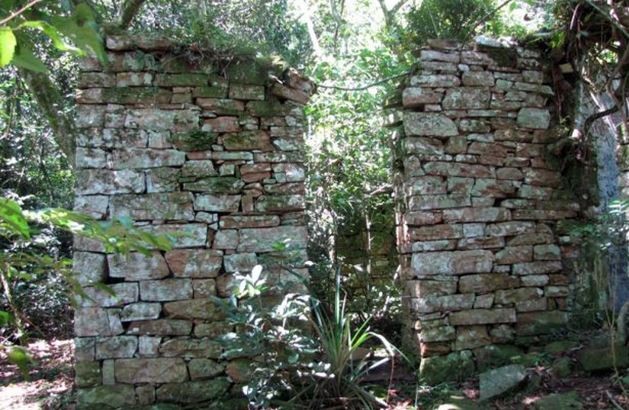Ruined buildings discovered in a remote Argentine jungle nature reserve might have been intended as a hideout for top Nazi officials after the end of World War II, said archaeologists that uncovered the site.
The secret Nazi colony is located at the Teyu Cuare Park in Misiones province, 1,100 kilometers north of Buenos Aires and near the South American country's border with Paraguay. It was uncovered after researchers used machetes to hack through jungle vines and undergrowth.
Archaeologists believe the sturdy buildings with their thick walls were evidently designed as a sanctuary for fleeing Nazis after World War II. They also found German coins dating to the 1940s.
Daniel Schavelzon, who directs the urban archaeology center at Buenos Aires University and heads the team researching the site, said the buildings were evidently designed as a hideout, but "the Nazis never lived here because they realized they could live more comfortably, and in hiding, while living in cities."
"We can find no other explanation as to why anyone would build these structures," Schavelzon said.
He also said construction took "great effort and expense, in a site which at that time was totally inaccessible, away from the local community, with material which is not typical of the regional architecture."
Some local residents allege the buildings served as a hideout for Martin Bormann, Adolf Hitler's private secretary. Schavelzon, however, dismissed the rumor.
Other locals say Jesuits constructed the buildings more than 200 years ago but Schavelzon also rejected this theory because the site dates back only to the 1940s. Apart from the German coins, his team also found pieces of German porcelain stamped with the words "Made in Germany".
Efraim Zuroff, chief Nazi hunter and director of the Simon Wiesenthal Center's Israel office, said the findings are not yet definitive but if they were accurate "it wouldn't surprise me because there also ideas of Nazi-escaping refugees."
"Many leading Nazis went to Argentina -- Josef Mengel, Adolf Eichmann, Josef Schwamberger -- so this finding is possible, but the bottom line is that it never reached fruition, this secret colony of Nazis," Zuroff said to UT San Diego.
It's believed over 5,000 Nazis fled to Argentina in the years after the war, thanks to the friendly regime of President Juan Peron.




























